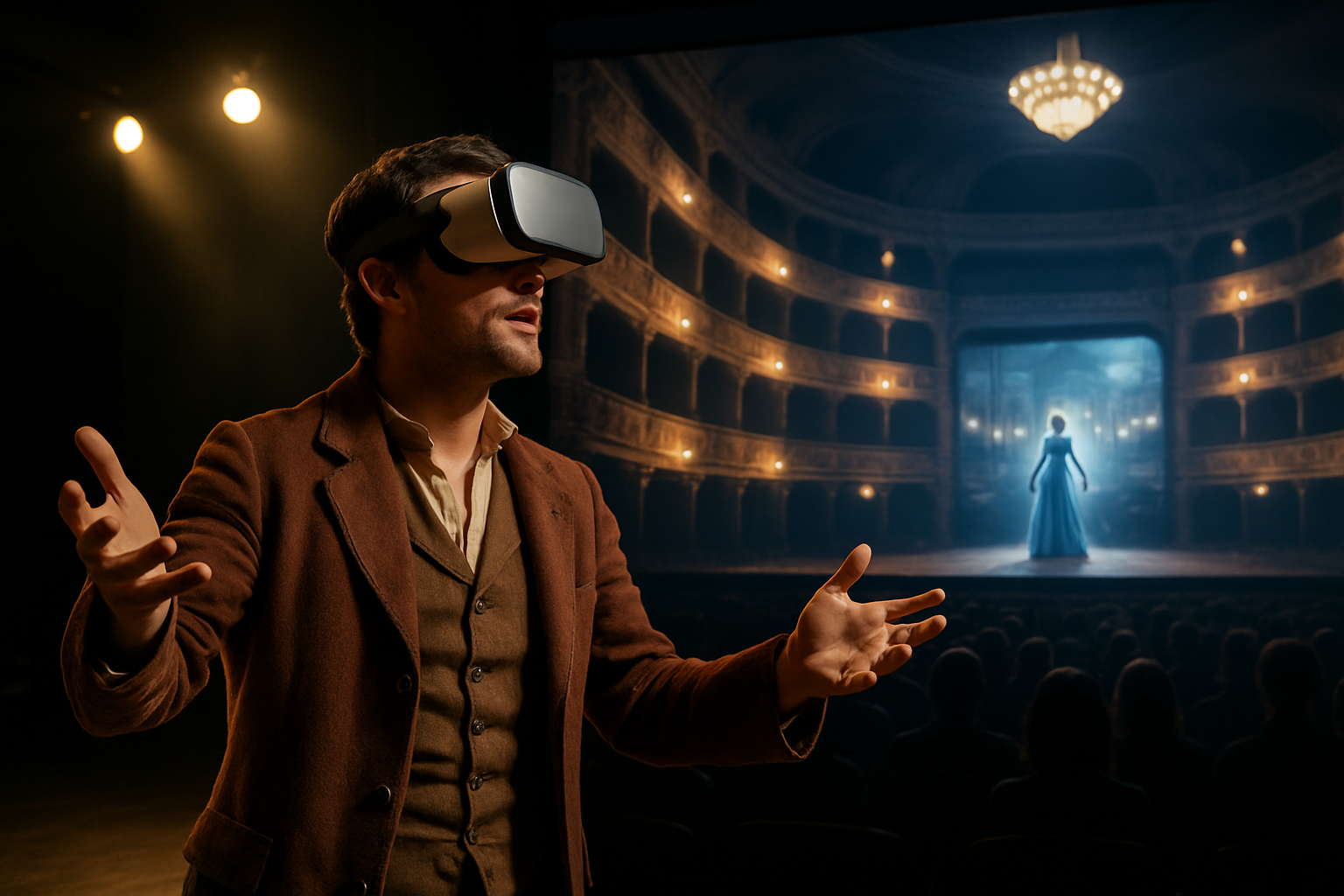Holographic Theater: The Next Dimension of Live Performance
In the ever-evolving landscape of performing arts, a groundbreaking fusion of technology and theater is captivating audiences worldwide. Holographic theater, once confined to the realm of science fiction, has emerged as a revolutionary medium, pushing the boundaries of live performance and redefining the theatrical experience. This cutting-edge art form combines the immediacy of traditional theater with the limitless possibilities of holographic projection, creating a mesmerizing spectacle that blurs the line between reality and illusion. As artists and technologists collaborate to explore this new frontier, holographic theater stands poised to transform the way we perceive and engage with live entertainment.

Redefining Spatial Boundaries
One of the most striking aspects of holographic theater is its ability to transcend physical limitations. Traditional theater is confined by the dimensions of the stage, but holographic projections can create infinite worlds within that space. Performers can interact with virtual environments that shift and transform in real-time, allowing for unprecedented storytelling possibilities. From vast cosmic landscapes to intricate microscopic worlds, holographic theater opens up new realms for artistic expression.
The Synergy of Live and Virtual
At the heart of holographic theater lies the interplay between flesh-and-blood actors and their digital counterparts. This symbiosis creates a unique performance dynamic, challenging actors to hone their craft in response to intangible scene partners. Directors and choreographers must navigate the complexities of staging performances that seamlessly blend the physical and the virtual, requiring a new set of skills and artistic vision. The result is a hybrid form of theater that combines the raw emotion of live performance with the spectacle of cutting-edge visual effects.
Technical Challenges and Innovations
Bringing holographic theater to life requires overcoming significant technical hurdles. Projecting convincing three-dimensional images in a live setting demands precision timing, advanced motion tracking, and carefully calibrated lighting. Innovators in the field are constantly developing new solutions, from specialized projection surfaces to adaptive real-time rendering systems. As these technologies evolve, the potential for more immersive and interactive holographic performances grows exponentially.
The Future of Theatrical Storytelling
As holographic theater matures, it is reshaping narrative possibilities in the performing arts. Writers and directors are exploring new forms of storytelling that leverage the unique capabilities of this medium. Multi-layered narratives can unfold simultaneously across different planes of reality, while abstract concepts can be visualized in ways previously impossible on stage. This convergence of technology and creativity is giving birth to entirely new genres of theatrical expression, challenging traditional notions of what constitutes a live performance.
Cultural Impact and Audience Reception
The advent of holographic theater has sparked both excitement and debate within the arts community. Proponents hail it as a revolutionary step forward, capable of attracting new audiences and revitalizing interest in live theater. Critics, however, question whether the reliance on technology might overshadow the human element that is central to theatrical tradition. As holographic productions become more prevalent, audiences are divided in their reactions, with some embracing the innovative spectacle while others yearn for more conventional forms of stagecraft.
Ethical Considerations in Digital Resurrection
One of the most contentious applications of holographic theater technology is the recreation of deceased performers. The ability to project lifelike images of iconic figures from the past raises complex ethical questions about posthumous rights and the nature of performance itself. While some view these digital resurrections as a way to honor and preserve cultural heritage, others argue that it crosses a moral line, potentially exploiting the legacies of artists who can no longer consent to their likeness being used.
Global Pioneers and Notable Productions
Around the world, theater companies and technology firms are pushing the boundaries of holographic performance. In Japan, the Hatsune Miku concerts have showcased the potential of fully virtual performers, while European opera houses have experimented with holographic set designs for classic productions. In the United States, Broadway is beginning to incorporate holographic elements into mainstream shows, signaling a shift towards wider acceptance of this technology in commercial theater.
The Economics of Holographic Theater
The integration of holographic technology into live theater presents both opportunities and challenges from an economic perspective. While the initial investment in equipment and expertise can be substantial, the potential for creating spectacular, effects-driven productions that can tour globally with minimal physical sets is appealing to producers. Additionally, the ability to broadcast holographic performances to multiple venues simultaneously opens up new revenue streams and accessibility options for theater companies.
Looking Ahead: The Evolution of Performance Art
As holographic theater continues to evolve, it is likely to influence other forms of performance art. From dance to opera, artists across disciplines are exploring ways to incorporate this technology into their work. The long-term impact on the performing arts landscape remains to be seen, but one thing is clear: holographic theater represents a bold step into uncharted creative territory, promising to reshape our understanding of live entertainment in the digital age.





